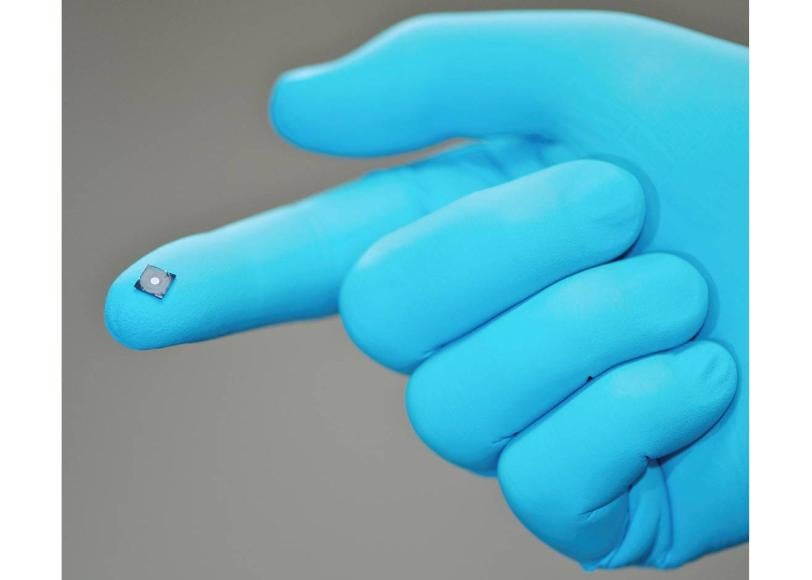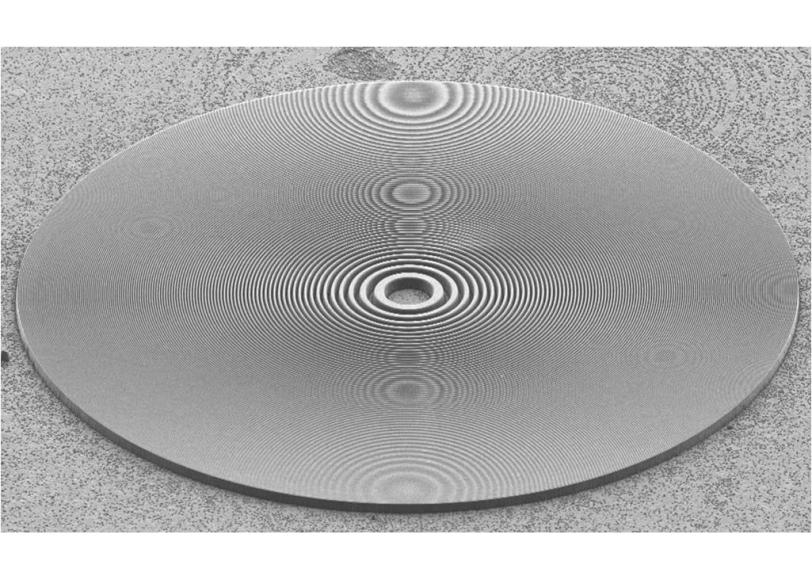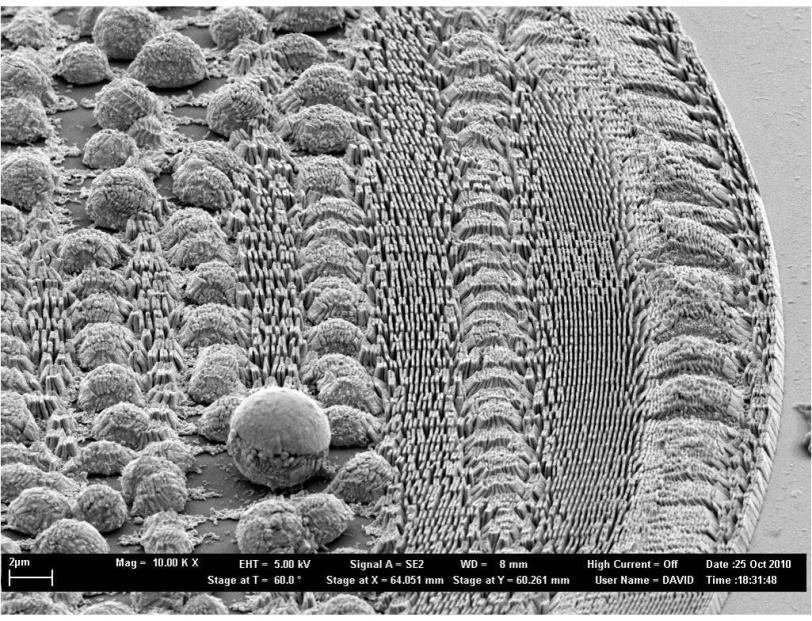Tools of the Trade: Diamonds Are Forever... for Focusing Intense X-rays
Diamonds can add more than sparkle and style to X-ray experiments at the Linac Coherent Light Source.
By Mike Ross
Diamonds can add more than sparkle and style to X-ray experiments at the Linac Coherent Light Source.
They are giving scientists a way to focus the LCLS’s powerful X-rays to a much tinier, brighter point without destroying the very device that does the focusing, according to a report from the Swiss team that created the new diamond-based technology.
The focusing device is called a Fresnel zone plate (see "Word of the Week" in Feb. 29, 2008 SLAC Today), a cousin of the lenses that send out bright beams from lighthouses. It’s been used since the 1960s to focus X-rays. But the X-ray pulses at the LCLS, which are a billion times brighter than at any previous light source, damage today’s sturdiest zone plates within a few seconds. Other focusing methods are more complicated and expensive.
Now, in a study reported last month in Nature’s Scientific Reports journal, a team led by Christian David from the Paul Scherrer Institute in Switzerland demonstrated that a Fresnel zone plate with a nanoscale bulls-eye pattern of iridium rings on a base of pure diamond can focus LCLS’s intense X-rays by a factor of 100,000, yet withstand the repeated brutal bombardment of the X-ray pulses.
“For some applications, it’s advantageous to use a zone plate to focus X-rays to a tiny, sub-micron spot,” said David Fritz, an instrument scientist for the LCLS X-Ray Pump Probe. “But LCLS’s high-intensity beam creates very challenging requirements for the optical elements we need to use.”
A zone plate is a set of circular, concentric ridges that get progressively narrower and closer together as they go from the middle out to the edge. Light passing through the ridges creates a diffraction pattern of constructive interference that focuses the light to a spot. For X-rays, the effect is enhanced by making the ridges out of heavy elements. But those elements absorb the X-ray energy and can melt under intense illumination.
Today’s zone plates consist of gold rings on a silicon nitride substrate. In experiments conducted last October at the XPP instrument, David’s team determined why these zone plates didn’t hold up.
“We showed that the gold rings of traditional zone plates degraded after only 15 seconds in the LCLS beam because the silicon nitride couldn’t draw away the heat absorbed by the gold fast enough,” David said.
In contrast, the iridium rings on a diamond surface showed no damage or focus degradation after a full 12-hour shift.
“For us, diamond is the perfect substrate because it has extremely high thermal conductivity and does not melt,” David said. “We also used iridium, which has the advantages of being heavier than gold and having a much higher melting point.” He added that these zone plates could last for a month or more at the tested rate of 60 X-ray laser pulses per second and would probably cost a small fraction of the price of focusing mirror systems.
This new result is the latest advance by scientists trying to focus X-rays, a task that their discoverer, Wilhelm Roentgen, deemed impossible a century ago.
Traditional visible-light lens designs don’t work very well with X-rays. While visible light bends when it passes through a curved lens, an X-ray’s path barely changes at all. There are alternative systems available, such as grazing incidence mirrors that reflect light by an angle of less than one degree or sets of up to 10 concave beryllium lenses, but they have their own limitations and can be expensive. For many applications, Fresnel zone plates offer an attractive combination of simplicity, relatively low cost and reasonable focus quality. They are named for Augustin-Jean Fresnel (1788–1827), a French optical engineer who developed the theory behind their design, which he used to make lightweight glass lenses for lighthouses.
David’s team is back at LCLS this week to test some new all-diamond zone plates designed to focus a greater fraction of the beam without using iridium or any other heavy elements.

(Photo copyright Paul Scherrer Institute)

(Image copyright Paul Scherrer Institute)

(Image copyright Paul Scherrer Institute)